Table of content
Crucian carp soup, a beloved dish in many cuisines, is celebrated for its delicate flavor, nourishing qualities, and comforting warmth. This humble yet elegant soup combines the natural sweetness of freshwater fish with aromatic herbs and vegetables, resulting in a broth that is both soothing and deeply satisfying. Whether you are a seasoned home cook or a novice in the kitchen, mastering the art of preparing crucian carp soup requires patience, attention to detail, and an appreciation for the harmony of flavors. In this comprehensive guide, we will explore the intricacies of selecting ingredients, preparing the fish, and simmering the broth to perfection. By the end of this article, you will be equipped with the knowledge to create a restaurant-quality soup that delights the senses and nourishes the soul.

The Allure of Crucian Carp Soup
Crucian carp (Carassius carassius) is a freshwater fish prized for its tender, flaky flesh and mild taste. Unlike stronger-flavored fish, crucian carp absorbs the flavors of its cooking liquid, making it an ideal candidate for soups and stews. In many cultures, this dish is associated with family gatherings, seasonal celebrations, and traditional medicine, as it is believed to strengthen the immune system, improve circulation, and promote overall well-being. The soup’s milky-white broth, achieved through a careful simmering process, is a hallmark of its quality and freshness.
Selecting the Finest Ingredients
The foundation of any great soup lies in the quality of its ingredients. For crucian carp soup, freshness is non-negotiable. Here’s a breakdown of the key components:
-
Crucian Carp:
- Opt for whole fish weighing between 300–500 grams. Smaller fish tend to be sweeter and less bony.
- Look for clear eyes, shiny skin, and a fresh, sea-breeze aroma. Avoid fish with dull eyes or a strong fishy odor, as these indicate spoilage.
- If whole fish is unavailable, ask your fishmonger to fillet it, but retain the head and bones—they are essential for flavoring the broth.
-
Aromatics and Vegetables:
- Ginger: A 2-inch piece of fresh ginger, sliced into thin strips. Ginger not only adds warmth but also neutralizes any potential fishiness.
- Green Onions: A small bunch, separated into white and green parts. The white sections are used for sautéing, while the green parts are reserved for garnish.
- Garlic: 3–4 cloves, lightly crushed.
- Carrots: 1 medium carrot, peeled and sliced into rounds for a touch of natural sweetness.
- Celery: 2 stalks, chopped (optional, for added depth).
-
Broth Base:
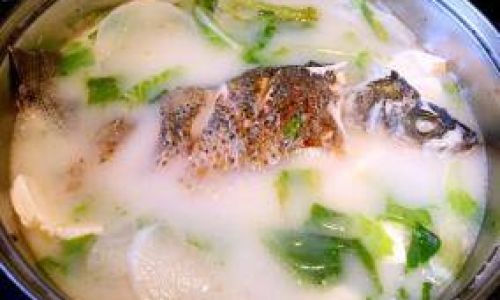
- Water: 6–8 cups, preferably filtered to ensure clarity.
- Shaoxing Wine: 1 tablespoon (or dry sherry), to enhance the broth’s complexity.
- White Pepper: A pinch, to season without overpowering.
-
Optional Enhancements:
- Dried Shiitake Mushrooms: 3–4 pieces, rehydrated and sliced, for an earthy umami note.
- Tofu: 100 grams, cubed, to add protein and a silken texture.
- Milk or Cream: ¼ cup, for a richer, velvety finish (use sparingly to avoid curdling).
Preparing the Fish: A Delicate Process
Properly cleaning and preparing the crucian carp is crucial for a pristine-tasting soup. Follow these steps meticulously:
-
Scaling and Gutting:
- Rinse the fish under cold water. Use the back of a knife to scrape off any remaining scales, working from tail to head.
- Make a shallow incision along the belly and remove the entrails. Rinse the cavity thoroughly to eliminate any traces of blood or guts.
-
Removing Gills and Fins:
Snip off the fins using kitchen shears. The gills, located just behind the eyes, should be pulled out carefully—they can impart bitterness if left intact.
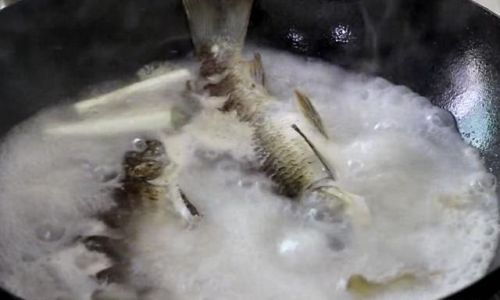
-
Marinating (Optional):
For added flavor, marinate the fish in a mixture of 1 tablespoon soy sauce, 1 teaspoon sesame oil, and a pinch of white pepper for 15 minutes. This step is optional but enhances the fish’s taste.
-
Drying the Fish:
Pat the fish dry with paper towels. Excess moisture can cause the broth to become cloudy and prevent proper browning during searing.
The Cooking Process: Building Flavor Layer by Layer
Crucian carp soup’s success hinges on a methodical cooking process that develops depth and richness. Here’s how to execute each stage flawlessly:
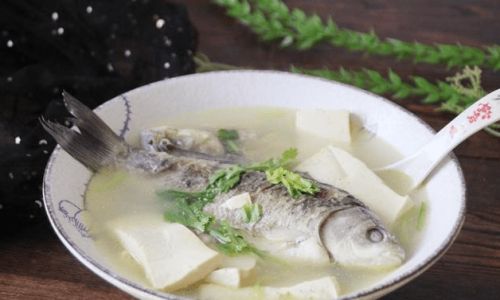
Searing the Fish: The Flavor Foundation
- Heat 2 tablespoons of neutral oil (e.g., vegetable or canola) in a heavy-bottomed pot over medium heat.
- Add the sliced ginger and crushed garlic, sautéing until fragrant (30–45 seconds).
- Gently place the crucian carp into the pot and sear for 3–4 minutes per side until golden brown. This step caramelizes the fish, creating a rich, savory base for the broth.
- Remove the fish and set it aside. Discard the oil, leaving behind the flavorful browned bits (fond) in the pot.
Sautéing Aromatics: Aromatic Infusion
- Add 1 tablespoon of fresh oil to the pot and return it to medium heat.
- Toss in the white parts of the green onions, carrots, and celery (if using). Sauté for 2–3 minutes until softened.
- Deglaze the pot with Shaoxing wine, scraping up any stuck-on bits with a wooden spoon. This step elevates the broth’s complexity.
Simmering the Broth: The Transformation
- Return the seared fish to the pot and pour in 6–8 cups of water. The liquid should just cover the fish.
- Bring the mixture to a gentle boil, then immediately reduce the heat to a bare simmer. Skim off any foam that rises to the surface—this ensures a clear broth.
- Add the rehydrated shiitake mushrooms (if using) and a pinch of white pepper.
- Cover the pot and let the soup simmer for 45–60 minutes. The prolonged cooking time extracts collagen from the fish bones, resulting in a velvety, milky-white broth.
Incorporating Add-Ins: Texture and Substance
- After 30 minutes of simmering, gently add the tofu cubes (if using) to the pot. Avoid stirring vigorously to prevent breaking the fish.
- Continue simmering for the remaining 15–30 minutes.
Final Touches: Seasoning and Garnish
- Taste the broth and adjust seasoning with salt (start with ½ teaspoon) and a squeeze of lemon juice for brightness.
- Stir in milk or cream (if using) during the last 5 minutes for a luxurious finish.
- Ladle the soup into bowls, garnishing with the reserved green onion slices and a drizzle of sesame oil.
Serving Suggestions and Pairings
Crucian carp soup is a versatile dish that pairs beautifully with a variety of accompaniments:
- Steamed Rice: A classic choice to soak up the flavorful broth.
- Pickled Vegetables: Tangy kimchi or Chinese preserved vegetables cut through the soup’s richness.
- Fresh Herbs: A handful of cilantro or Thai basil adds a vibrant, aromatic note.
For a complete meal, serve the soup alongside lightly steamed greens (e.g., bok choy or spinach) and a plate of stir-fried mushrooms.
Health Benefits of Crucian Carp Soup
Beyond its culinary appeal, this soup offers a wealth of nutritional advantages:
- Protein-Rich: Crucian carp is an excellent source of lean protein, essential for muscle repair and immune function.
- Omega-3 Fatty Acids: These heart-healthy fats reduce inflammation and support brain health.
- Vitamins and Minerals: The soup provides vitamin D, B12, selenium, and phosphorus, all of which contribute to bone health and metabolic function.
- Low in Calories: A bowl of crucian carp soup contains approximately 150–200 calories, making it a guilt-free indulgence.
Variations and Creative Twists
While the traditional recipe is timeless, feel free to experiment with regional variations:
- Spicy Sichuan-Style: Add doubanjiang (chili bean paste) and Sichuan peppercorns for a fiery kick.
- Coconut-Infused: Replace water with coconut milk and toss in lemongrass and kaffir lime leaves for a Thai-inspired twist.
- Herbal Tonic: Include goji berries, jujube dates, and astragalus root for a medicinal boost.
Common Pitfalls and How to Avoid Them
Even seasoned cooks may encounter hiccups. Here’s how to troubleshoot:
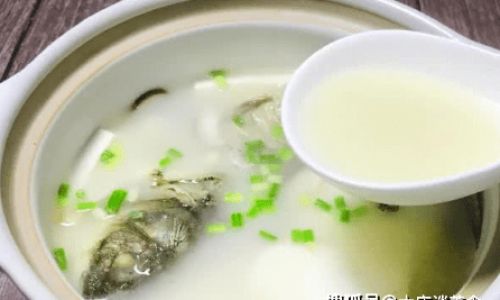
- Cloudy Broth: Skim foam religiously during simmering and avoid boiling vigorously.
- Fishy Aftertaste: Use fresh fish, remove gills, and sear properly to neutralize any unwanted odors.
- Overcooked Fish: Simmer gently rather than boiling aggressively to keep the fish tender.
- Bland Flavor: Balance seasonings gradually and add acidity (lemon juice) to brighten the broth.
Conclusion: A Labor of Love
Crucian carp soup is more than a dish—it is a testament to the alchemy of simple ingredients transformed by time and care. From selecting the freshest fish to nurturing the broth to perfection, each step demands patience and precision. Yet, the reward is a bowl of soup that warms the body, calms the mind, and connects us to centuries of culinary tradition. Whether enjoyed on a chilly evening or shared with loved ones around a table, this soup is a reminder that sometimes, the most profound pleasures are found in the quiet art of slow cooking.
So, gather your ingredients, embrace the rhythm of the kitchen, and let the aroma of simmering broth fill your home. Your journey to mastering crucian carp soup begins here—one delicate simmer at a time.

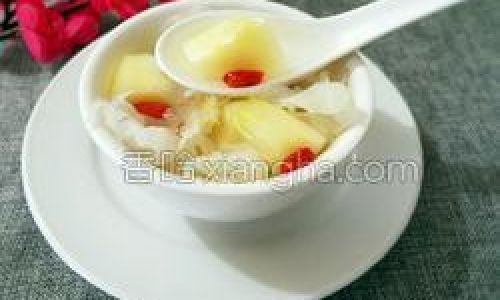

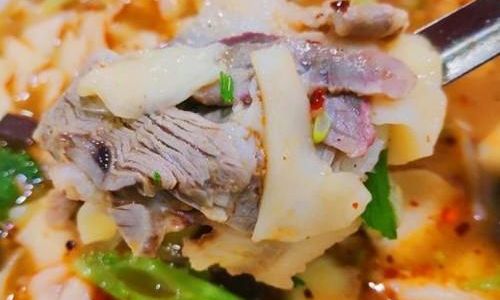
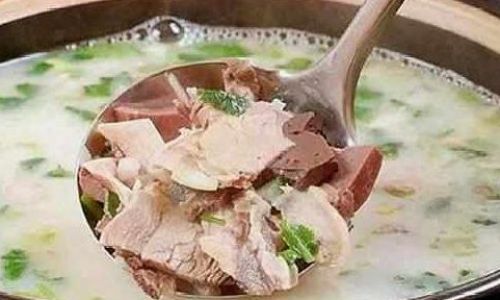
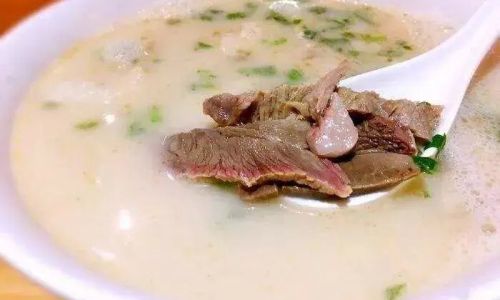
0 comments